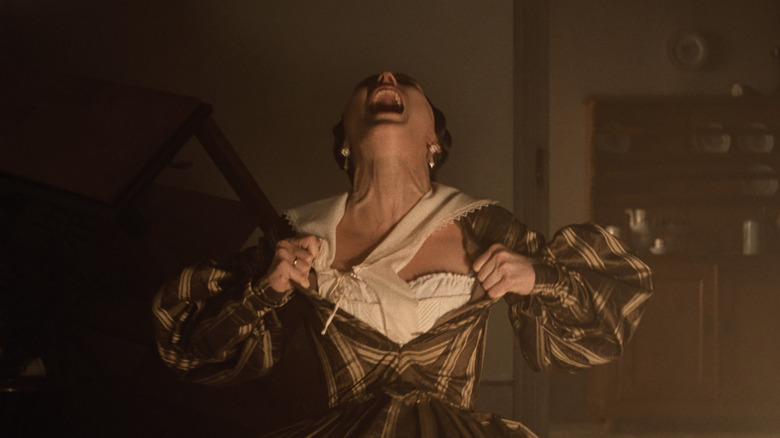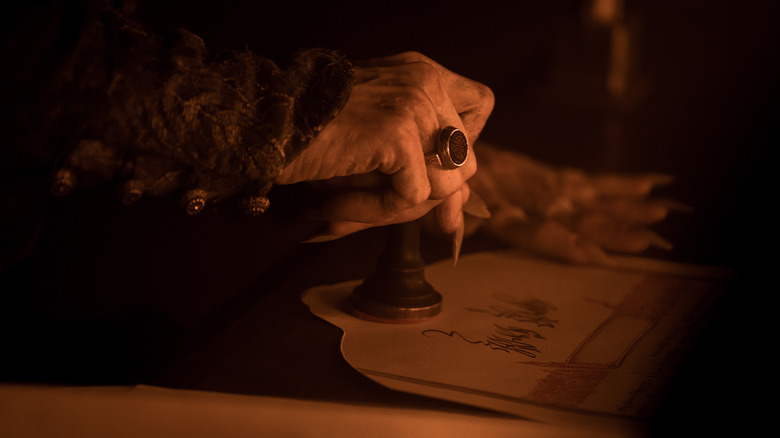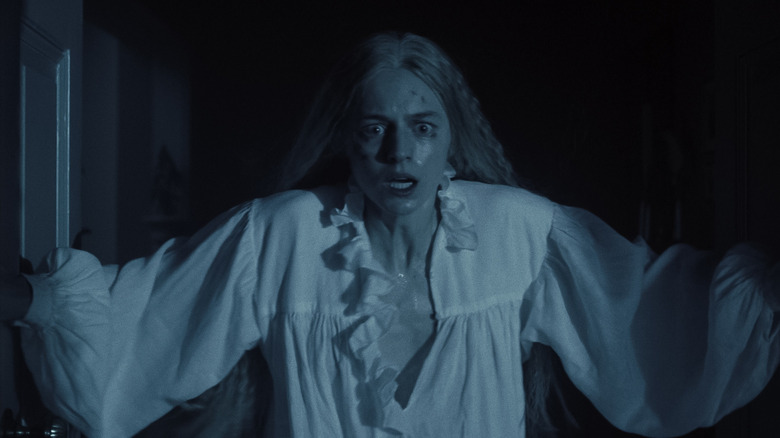Horror is my favorite genre, but in general it doesn’t scare me. I’m not bragging about how brave I am (trust me; a lot of things scare me: I have a panic attack every time I have to get on a plane), but simply stating that I’ve spent a lot of time with the horror genre. that I have become insensitive to it. I still love and appreciate horror movies, but they very rarely make me feel scared. So when I see a horror movie that manages to reach me on a raw, primal, emotional level, I’m impressed. AND “Nosferatu” by Robert Eggers a new version of “Dracula” and FW Murnau’s silent film classic, apparently achieves the impossible: it’s scary!
To be fair, horror, like comedy, is a very subjective genre. What scares one person may seem ridiculous to another. In my experience, a large portion of the general public associates “jump scares” with horror. I don’t want to go into a long rant about shocks, but I will say this: while Some shocks can be effective and impressive.many filmmakers use them in lazy and cheap ways (the most stereotypical example is when a harmless cat jumps out of nowhere, screeching and scaring the characters on screen). In my humble horror movie fan opinion, jump scares are not what makes a horror movie scary. The type of fear I crave is on a more psychological and emotional level. I’m talking about fear; the unshakeable feeling that something is mistaken in an almost indescribable way. Japanese filmmaker Kiyoshi Kurosawa is an expert in this and his films “Pulse”, “Cure” and this year’s “Chime” They all manage to scare me with the way they create an overwhelming sense of dread.
When I sat down to watch Robert Eggers’ “Nosferatu,” I more or less knew what I was getting into. I’ve seen virtually every “Dracula” movie there is and know the story inside and out. And indeed, Eggers’ film doesn’t change much in terms of the story. It follows very similar rhythms to both Murnau’s original and many other “Dracula” adaptations. And yet, despite my prior knowledge, Eggers’ film really scared me. As? What is the secret?
Nosferatu often feels like a fever dream
The key ingredient that makes Eggers’ “Nosferatu” so terrifying is its eerie atmosphere. Working with cinematographer Jarin Blaschke (who also filmed Eggers’ films “The Lighthouse” and “The Northman”), the director evokes the sensation of a nightmare from the beginning. In a brief prologue, we see Ellen (Lily-Rose Depp), a young woman, attracted and tormented by a mysterious and shadowy figure. We know, of course, that this figure is Count Orlok, an ancient vampire bonded to Ellen by her melancholic spirit. Eggers wisely keeps Orlok, played by an unrecognizable Bill Skarsgård, off camera as much as possible.
Before making his grand entrance, we follow Ellen’s husband Thomas (Nicholas Hoult) as he leaves Germany and heads to Transylvania to close a land deal with Orlok. Before reaching Orlok Castle, Thomas stops at a local inn, where he is mocked by the superstitious locals. Later he witnesses a strange ceremony in which these locals dig up a corpse and drive a metal stake into its chest, full of blood. The moment is broken when Thomas wakes up in his bed, horrified. Was it all a nightmare? Or did he really witness this barbaric event? It’s not clear, and that’s the point. Things get stranger and more surreal from here, as Thomas heads to Orlok Castle in a near daze. The snow falls, the camera swoops in, and things feel really strange. When Thomas finally meets Orlok, the vampire remains virtually invisible, but we hear his deep, rumbling, guttural voice.
The scenes of Thomas in Orlok Castle are the most effective for me. Anyone who has ever had a high fever probably remembers the strange, out-of-place feeling it causes. Everything you see is felt strange in some subtle way; It’s like your brain is boiling inside your skull and frying your thoughts, causing your perception to become skewed. Eggers is able to recreate this same feeling when Thomas, in a kind of hypnotic daze, falls under Orlok’s spell.
Nosferatu manages to be scary even if you’re already familiar with the story
From here, “Nosferatu” becomes more disturbing as Orlok heads to Germany and sets his sights on Ellen and those around her. While the story of a vampire increasingly obsessed with an innocent female victim is well-rooted in horror lore, Eggers’ “Nosferatu” finds ways to add interesting twists to the formula. Ellen, a woman prone to seizures, seems to believe that her depressed nature has somehow conjured Orlok; it’s as if he is a physical representation of her troubled mind. Orlok, in turn, seems attracted to Ellen because her melancholic soul is like a kind of catnip; he can’t resist her. These two figures are caught in a kind of psychosexual drama, with Depp’s wild physical performance evoking Isabelle Adjani’s memorable work in “Possession.”
All of this creates an almost suffocating sense of doom in the film that is only enhanced by the cold, wintry atmosphere (the film takes place around Christmas, and there is even a candlelit Christmas tree in one scene). Later, when one of the film’s characters opens a coffin and embraces the corpse of a loved one, the mood is almost too sad to bear, which only adds to the overall horror.
At the same time, Eggers remembers having a little fun with his dark film. Almost everything Willem Dafoe does as a Van Helsing-style vampire hunter elicits laughs, and Aaron Taylor-Johnson is hilariously funny as a man who seems incredibly upset that the women in the film are acting so hysterical about this vampire business. . But the overwhelming sense of dread is what makes “Nosferatu” so effective, and as its haunting final frames arrive, it’s hard not to be impressed with what Eggers has created.
“Nosferatu” is now in theaters.








